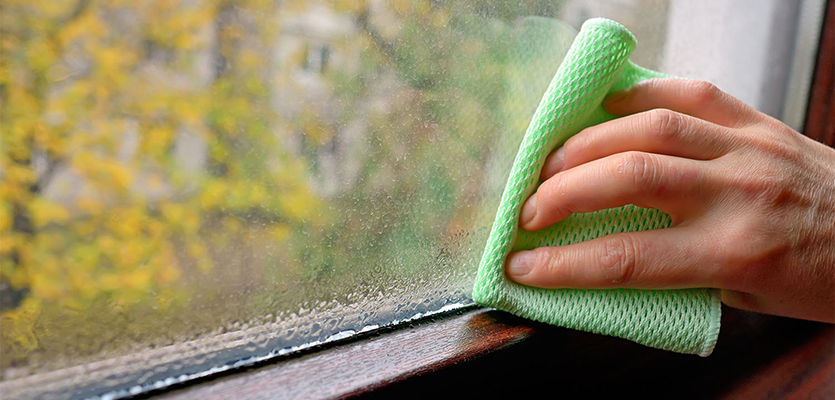With the current trend of eco-friendly and green initiatives driving better energy consumption and sustainable design of new buildings, there is an increasing requirement to have buildings further sealed off to air leakage and ensure any air entering or exiting your apartment is avoided, which unfortunately can sometimes result in condensation and moisture build up. Condensation in modern apartments must be monitored and managed, especially for south facing apartments.
The condensation problem occurs predominantly because modern apartments are required by law to be extremely well sealed against air ingress from the outside. This situation has arisen because the Building Code of Australia (BCA) requires all new apartments to have air tight seals around doors, windows and other openings into the building. The reason for the seals is to stop transfer (heat either getting in or getting out) so as to minimise the requirement to heat and cool apartments. A consequence of the air tight sealing of apartments is that there is a restriction of free flowing air without opening doors/windows.
During normal occupancy of an apartment, occupants will shower, cook and wash/dry clothes. All of these activities produce moisture which is generally exhausted to the outside by bathroom or kitchen exhaust fans. However, the fans require a degree of free flowing air to maximise efficiency. The reason that fans require free flowing air is to avoid a vacuum effect created by the air tight sealing of windows and door. Therefore, the fan is trying to extract air (and moisture) from the apartment to discharge it to outside and is reduced in efficiency because the seals work so well.
As the moisture stays inside the apartment, the apartment can feel humid especially when the heating is on. Overnight during winter (when the moisture and condensation are most prevalent), the cold outside temperature will cause condensation on the windows. The amount of condensation will depend on the amount of moisture in the air inside the apartment. There have seen cases where the condensation caused water to trickle down the glass.
To overcome the condensation, some simple steps can be employed by occupants to minimise the build-up of moisture inside their apartment. This will include measures such as:
1. Avoid excessively hot showering
2. Leaving the bathroom door open or slightly ajar during showering to assist the fan to work more efficiently
3. Letting the bathroom and kitchen exhaust fans run on for a period of time after showering or cooking
4. Having a window slightly ajar when showering or cooking
5. Opening external doors and windows for a good period each day to let natural ventilation/air movement help get moisture out of the apartment
6. Putting clothes out to dry on the balcony rather than inside should Owners Corporation permit
Moisture inside homes is not limited to apartments but is also present in houses. However, houses are larger in volume and can therefore tolerate larger quantities of moisture in the air, external doors are frequently opened, windows are easier to open as they might be the awning type, which means fresh air is always coming in and reducing the level of moisture in the air. All of these factors mean that houses experience a less severe problem with condensation.

